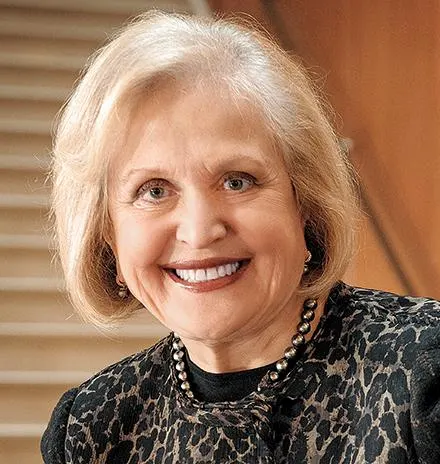
The United States has serious health care problems: More than 27 million uninsured people, costs that are growing faster than income, and a staggering $37 trillion of unfunded liabilities in the Medicare program.
Perhaps most alarming: The US ranks lowest among developed nations in avoiding preventable deaths, despite its world-class resources and medical technology.
The Democratic presidential candidates have been debating the benefits of the “Medicare for All” approach versus a public insurance option. The former would force all of us onto the government program, while the latter would allow people to choose Medicare or private insurance. The Republicans, for their part, have focused on dismantling Obamacare and making hospital prices more transparent.
Which, if any of these, can solve these serious problems? We think that a public option could if, unlike Medicare, it’s priced on a pay-as-you-go actuarial basis.
The public discourse about Medicare for All is deceptively appealing. The health care program for the nation’s seniors is highly prized by Medicare beneficiaries—85 percent say they’re satisfied.
Who can blame them? US Congress, regardless of the political party in charge, gives away an average $310,000 in benefits over what the typical member has purchased. Not surprisingly, this Ponzi scheme collects far less of the taxes and premiums necessary to fund it.
Medicare’s leverage helps eliminate the one-third of health care expenditures that experts view as simple waste.
Every year, the government kicks the present value of these unpaid bills—$37 trillion at last count—down the road to future generations. Expanding Medicare would cost the nation an additional $34 trillion over the first decade.
That said, Medicare’s massive scale—61 million enrollees—delivers real efficiencies. Medicare spends as much as seven times less than private insurers on administrative costs. The program also pays hospitals 40 percent less and providers 2-3.5 times less than private insurers pay for the same services.
Skeptics contend that providers make up for this by charging more to private insurers, but that has largely been disproven. Instead, Medicare’s leverage helps eliminate the one-third of health care expenditures that experts view as simple waste.
The advantages of a public option
The public option can take advantage of these economies of scale and offer insurance at genuinely lower prices, but only if it is implemented without the financing gimmicks that have artificially lowered the costs of Medicare at the expense of future generations.
The pricing of the public option must conform to that of private insurance plans, with expenses financed by current users, not future generations. The public option plan should also avoid the government accounting gimmicks that artificially lower Medicare’s costs.
It must include all its expenses, such as the unfunded liabilities for Medicare employees’ post-retirement benefits. It must also account for its share of the capital that American taxpayers have invested in Medicare’s infrastructure, including its buildings, equipment, and workers.
The public option would harness Medicare’s pricing advantages while ensuring a competitive marketplace for benefits.
Independent, private accountants should audit the public option’s financial statements to certify that its administrators stated expenses accurately, just as they do for private insurers.
Unlike Medicare, this version of the public option would break even, and its low price would expand coverage. But, similar to the popular Medicare Advantage program, the public option would harness Medicare’s pricing advantages while ensuring a competitive marketplace for benefits.
Can the somnolent private insurers that cover close to 200 million people survive this competition?
Yes, if they use their natural advantages to create appealing insurance plans.
To hold down costs, private insurers currently require patients to seek pre-approval for specialist care, and vary enrollees’ out-of-pocket costs. Competition with a low priced public option would force insurers to use their massive scale to lower costs—thus increasing coverage—and improve the quality of care.
Insurers could also offer plans that would be politically unfeasible for the public option. For example, private insurers can offer policies that transport members from high-cost locations for care to high-quality, low-cost ones. Ashley Furniture used this approach recently when it sent an enrollee to Cancun, Mexico, for an orthopedic procedure, covering all of the patient’s travel and out-of-pocket expenses. The company paid an American surgeon three times Medicare’s rate to perform the procedure and paid the enrollee $5,000.
The way forward for health insurance
As for Republicans, it is difficult to see how their initiatives would solve any health care problems, other than somewhat lowering costs by increasing the number of uninsured. Eliminating the requirement that all people have insurance has already reduced enrollment in Obamacare by 7 million people from 2016 to 2019.
And while the hospital price transparency that Republicans espouse is much needed, recalcitrant hospitals will snarl this idea in legislation.
Americans generally like private insurance and Medicare but universally deplore their costs.
Medicare for All eliminates private insurers and increases taxpayers’ burden, while a public option would enliven private insurers, increase coverage, and control health care costs.
However, it would require legislative discipline and independent oversight to assure that the public option achieves these goals legitimately, without resorting to Medicare’s financing gimmicks.
About the Author
Regina E. Herzlinger is the Nancy R. McPherson Professor of Business Administration at Harvard Business School. James Wallace is a senior research associate. Herzlinger and co-author Richard Boxer wrote The Case for the Public Option Over Medicare for All published by the Harvard Business Review.
[Image: Hispanolistic]
Related Reading
What do you think of Medicare for All? What's the best way to improve the US health care system?
Share your insights below.
